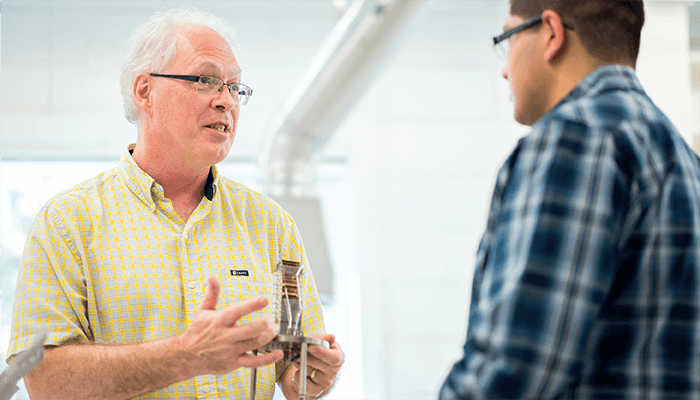I write this on my way home from the Biennial Chemistry Education Conference (BCCE). The conference supercharged my enthusiasm with new ideas and hope that the trials of the past few years are behind us. But now – as my flight is delayed for the third time – the thunderclouds of reality begin to descend.
My teaching labs – like many others – have one or (at most two) of a particular instrument. Rarely does a student’s instrument time coincide with it being discussed in lectures; some students do the experiment long before learning the theory – and some see the instrument so long after that they have forgotten the theory. And that results in a large disconnect between the lecture and the lab components.
Simulators may hold the answer to this problem, and they are available for a wide variety of analytical instruments. And, although they are not a substitute for hands-on experience, they do allow all students to explore the instrument while the theory is being taught. The speed of simulators – far faster than a chromatographic run – allows students to gain experience much quicker, moving them closer to the Gladwellian 10,000 repetitions necessary for mastery. Simulators also enable exploration of conditions that might result in long run times or damage real instruments.

Simulators can be used for dry labs, demonstrations, and guided-enquiry activities. Dry labs can replace a traditional laboratory experiment with quick runs on a simulator. Dry labs for UV/visible absorbance, fluorescence, atomic spectroscopy, X-ray fluorescence, liquid chromatography, gas chromatography, ion chromatography, cyclic voltammetry, and more were developed during the COVID-19 pandemic – and are described in the Analytical Sciences Digital Library (ASDLIB) Remote Labs site (1). They have proved to be a vital teaching resource. Instrument behavior can easily be demonstrated using these simulators.
Increasingly, I am drawn to using simulators for demonstrations to enhance active learning in the classroom. For instance, the HPLC Teaching Assistant can be used to dynamically show the effect of changing retention factor (k) from 1 to 3 to 10. After the demonstration, I invite the class to discuss what will happen when k is increased to 20. Students correctly predict that resolution increases, but are surprised by how little.
Subsequently, I redo the demonstration pointing out the change in retention time; and then show k = 1, 3, and 10 again, this time pointing out the change in peak height; and then again to point out the change in signal-to-noise. Using these simulator demonstrations, students quickly gain a far richer appreciation for the impact of changing a variable – and such easy and rapid adjustments would be impossible with real-life instrument manipulation.
I have done such activities live, but they could alternatively be recorded as a screencast with students periodically pausing the video to do activities. In fact, guided-inquiry and screencast activities have demonstrated powerful learning gains (2). One can only imagine how much time and frustration the screencast students saved by not having to figure out how to use the simulator in real-time. Such screencast activities also allow use of simulators that students might find challenging to master.
Another pedagogical challenge is that proper technique is far easier to show than to describe. The COVID-inspired transition to electronic textbooks has enabled the inclusion of videos directly within the virtual pages of many textbooks. I prefer videos that explicitly demonstrate technique, rather than classroom-style lectures. As we transition to digital-first textbooks, I anticipate the use of such videos and simulations will continue to increase.
And though videos can provide students an excellent tour of the outside of instruments, they rarely get to see inside an instrument. Static figures in textbooks can convey only so much about instrument components. This is where augmented reality and 3D printed components (3) can open the lid on black box instruments – truly increasing students’ understanding of the inner-workings.
I see the lights of home in the distance, so let me finish with some grounded comments. Simulators, videos, and augmented reality can give students greater experience with instruments than traditional lectures. But they will never replace actual hands-on experience, which students can get through undergraduate research, cooperative education work terms, or internships. So here is my message to analytical scientists: use the modern pedagogical tools described above, but also encourage your students to seek out those real-life experiential learning opportunities!
References
- Analytical Sciences Digital Library, “Remote Labs and Simulations” (2020). Available at: https://remotelabs.asdlib.org/
- DG Herrington et al., “ChemSims: using simulations and screencasts to help students develop particle-level understanding of equilibrium,” Chemical Education Research & Practice, 23, 644 (2022). DOI: 10.1039/D2RP00063F
- L Garza, et al., “3D printing lifts the lid on black box instruments”, Analytical and Bioanalytical Chemistry, 413, 6905 (2021) DOI: 10.1007/s00216-021-03681-1.




